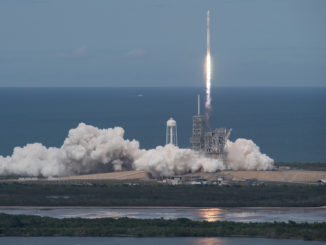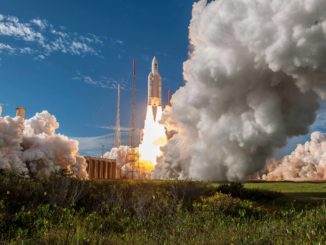EDITOR’S NOTE: Updated for new launch attempt on Jan. 19.
This is the launch timeline to be followed by the Atlas 5 rocket’s ascent into orbit from Cape Canaveral with the SBIRS GEO Flight 4 satellite for U.S. military infrared reconnaissance. Launch is scheduled for Friday at 7:48 p.m. EST (0048 GMT Saturday).
The Atlas 5 has a 40-minute window for takeoff Friday night, and the 189-foot-tall rocket will arc to the east from Florida’s Space Coast on its first flight of the year. It will be the 75th Atlas 5 launch overall since United Launch Alliance’s workhorse rocket debuted in August 2002.
The timeline below ends with the conclusion of the primary mission, the deployment of the SBIRS GEO Flight 4 satellite into geostationary transfer orbit. The Centaur’s RL10 engine will ignite a third time at T+plus 1 hour, 14 minutes, 17 seconds, for a planned 10-second de-orbit burn to steer the rocket back into Earth’s atmosphere, ensuring it does not add to space debris in orbit.
The Centaur is expected to re-enter over the Pacific Ocean, with most of it burning up in the atmosphere around 9 hours, 25 minutes, after liftoff.
Follow live coverage of the countdown and launch in our Mission Status Center.
T+00:01.1 Liftoff
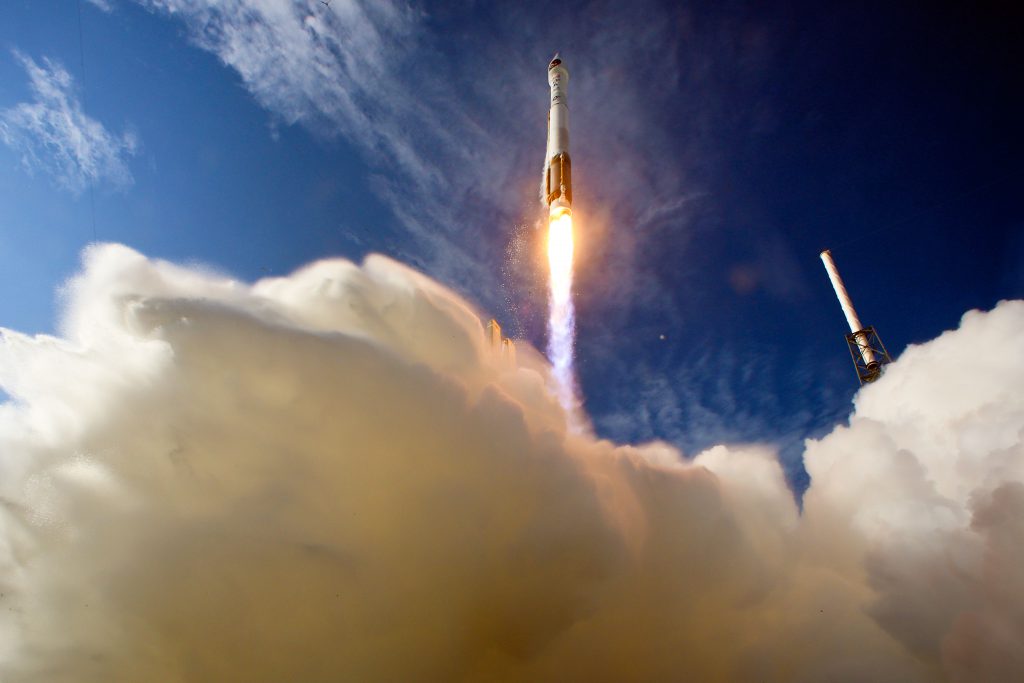
With the RD-180 main engine running, the Atlas 5 vehicle lifts off and begins a vertical rise away from Complex 41 at Cape Canaveral Air Force Station, Florida.
T+00:1:09: Max Q
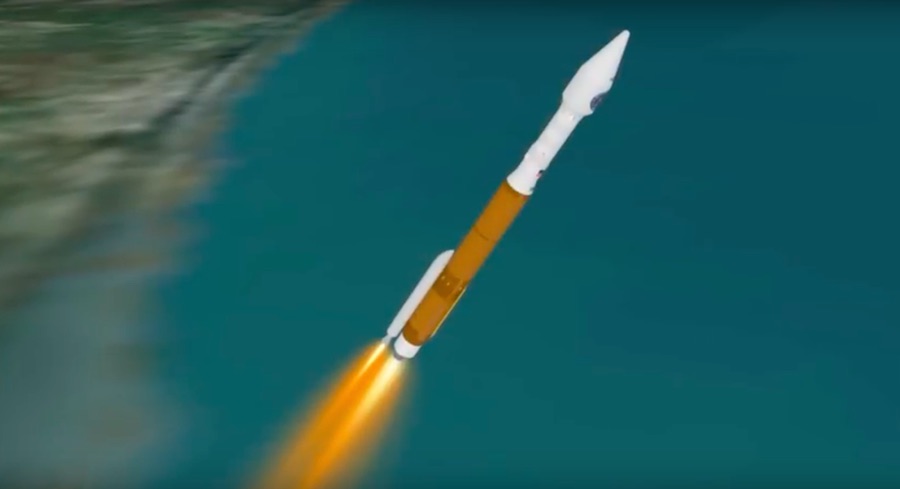
The Atlas 5 rocket, after breaking the sound barrier at 58 seconds, passes through the region of maximum dynamic pressure during ascent through the lower atmosphere.
T+02:20.5 Jettison SRB
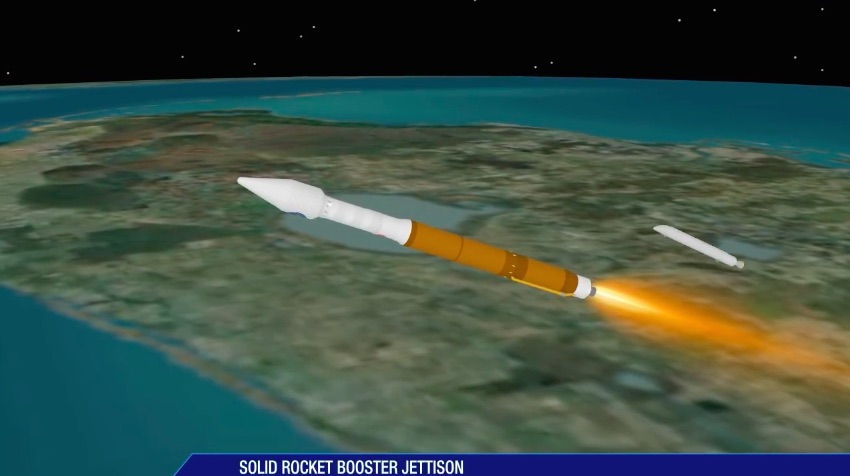
Having burned out of propellant approximately 50 seconds earlier, the spent solid rocket booster is jettisoned once dynamic pressure conditions are satisfied.
T+04:03.3 Main Engine Cutoff
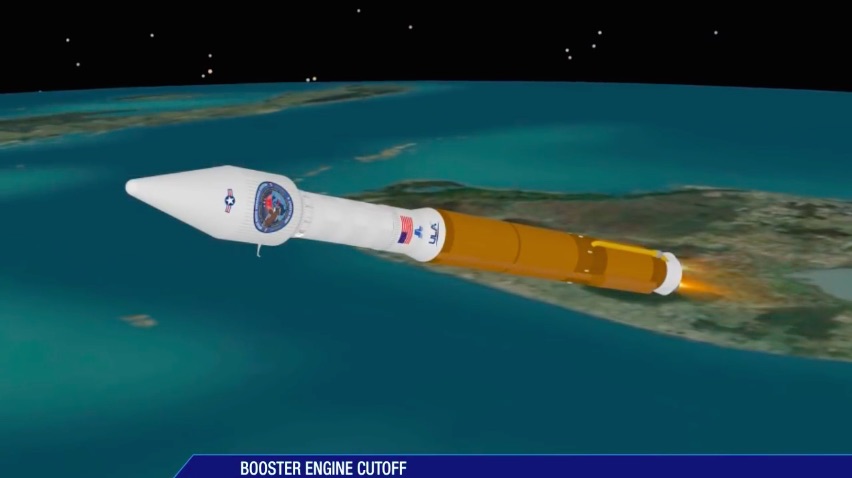
The RD-180 main engine completes its firing after consuming its kerosene and liquid oxygen fuel supply in the Atlas first stage.
T+04:09.3 Stage Separation
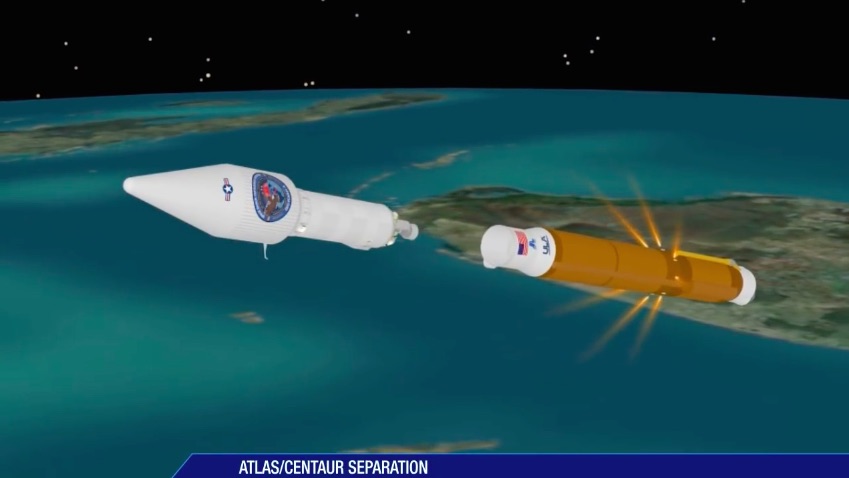
The Common Core Booster first stage of the Atlas 5 rocket separates from the Centaur upper stage. Over the next few seconds, the Centaur engine liquid hydrogen and liquid oxygen systems are readied for ignition.
+04:19.2 Centaur Ignition 1
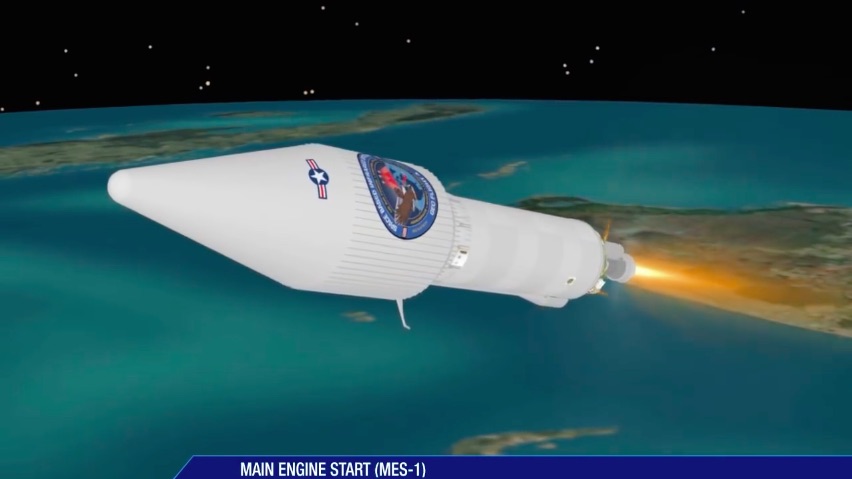
The Centaur RL10C-1 engine ignites for the first of two upper stage firings. This burn will inject the Centaur stage and SBIRS spacecraft into an initial parking orbit.
T+04:27.3 Nose Cone Jettison
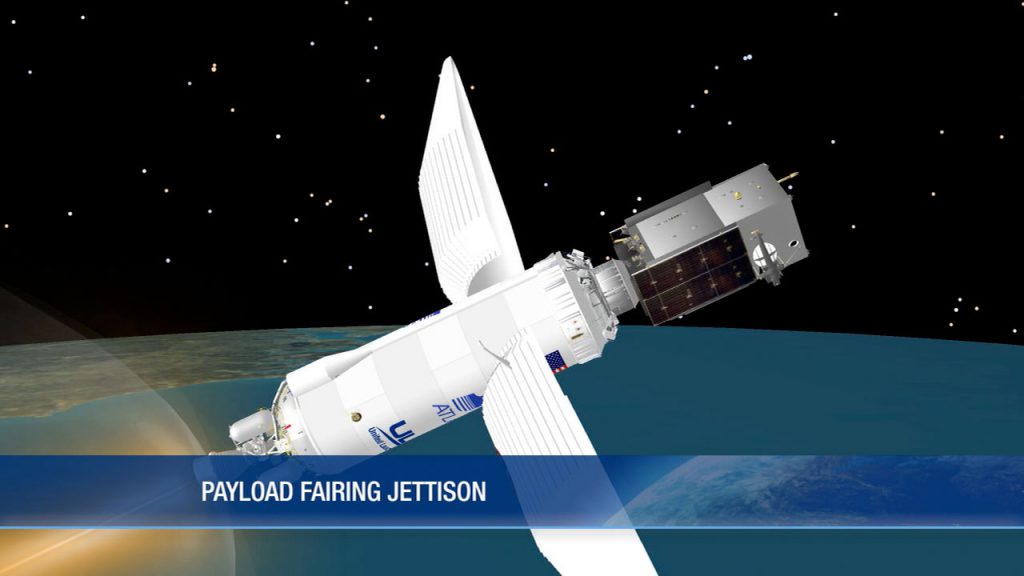
The payload fairing that protected the SBIRS GEO Flight 4 spacecraft during launch is separated after passage through the atmosphere.
T+13:49.9 Centaur Cutoff 1
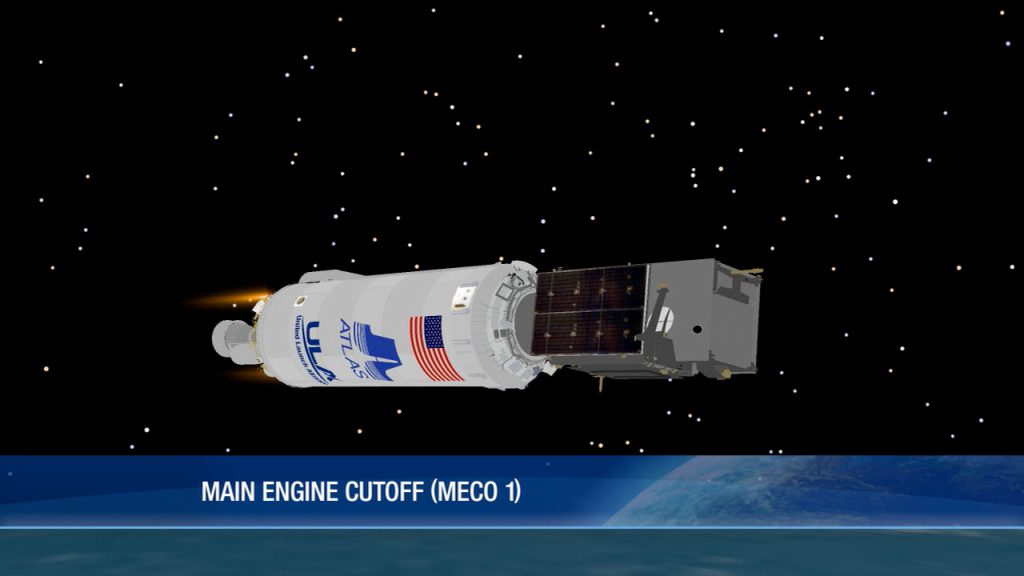
The Centaur engine shuts down after arriving in a planned low-Earth parking orbit. The vehicle enters a 10-minute coast period before arriving at the required location in space for the second burn.
T+24:16.8 Centaur Ignition 2
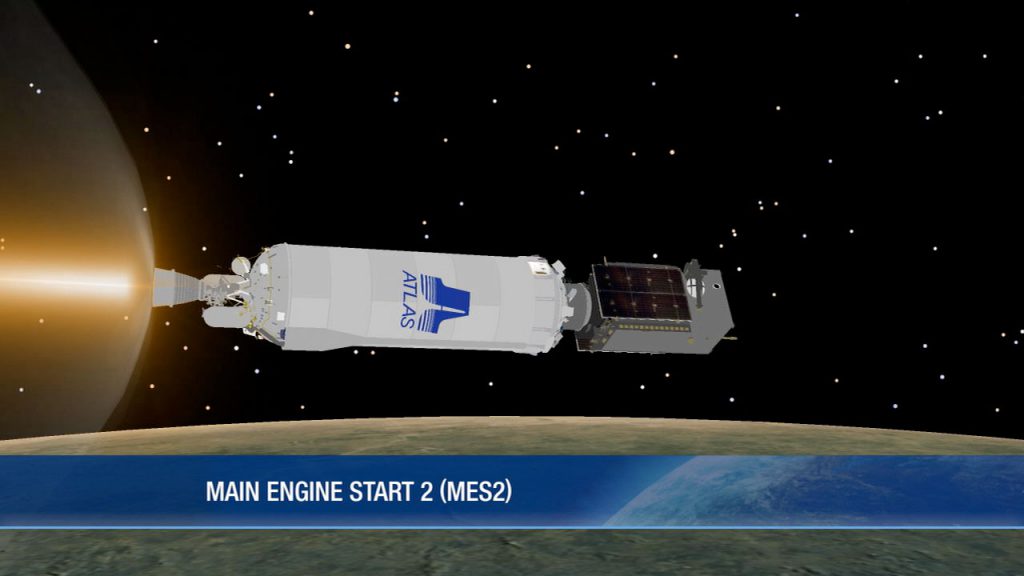
A final push by Centaur is ignited to raise the orbit’s low point and reduce orbital inclination for the SBIRS GEO Flight 4 spacecraft.
T+29:18.6 Centaur Cutoff 2
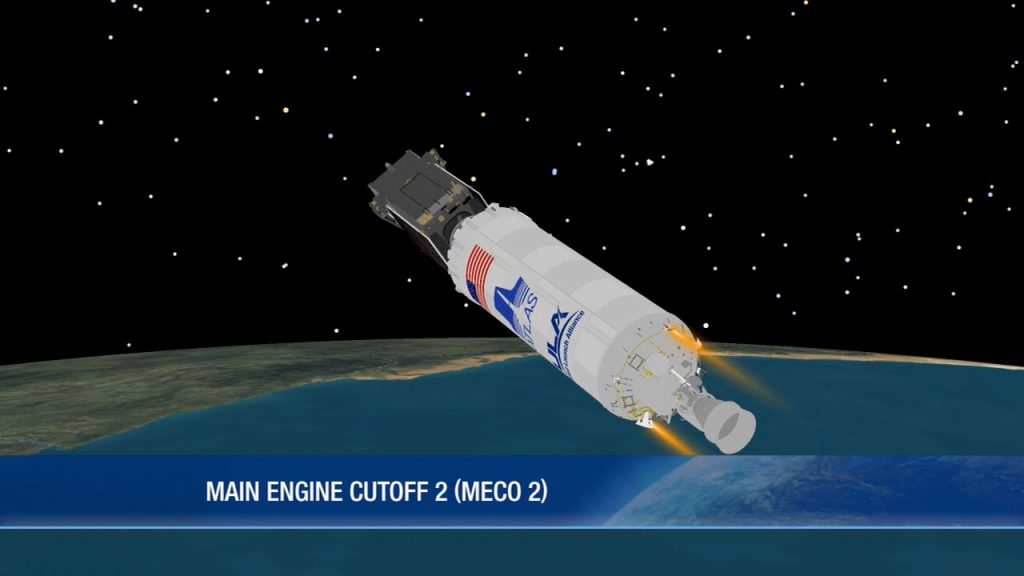
The powered phase of flight is concluded as the Centaur reaches the planned geosynchronous transfer orbit of 115 by 22,276 statute miles and inclined at 16.88 degrees.
T+42:31.6 Spacecraft Separation
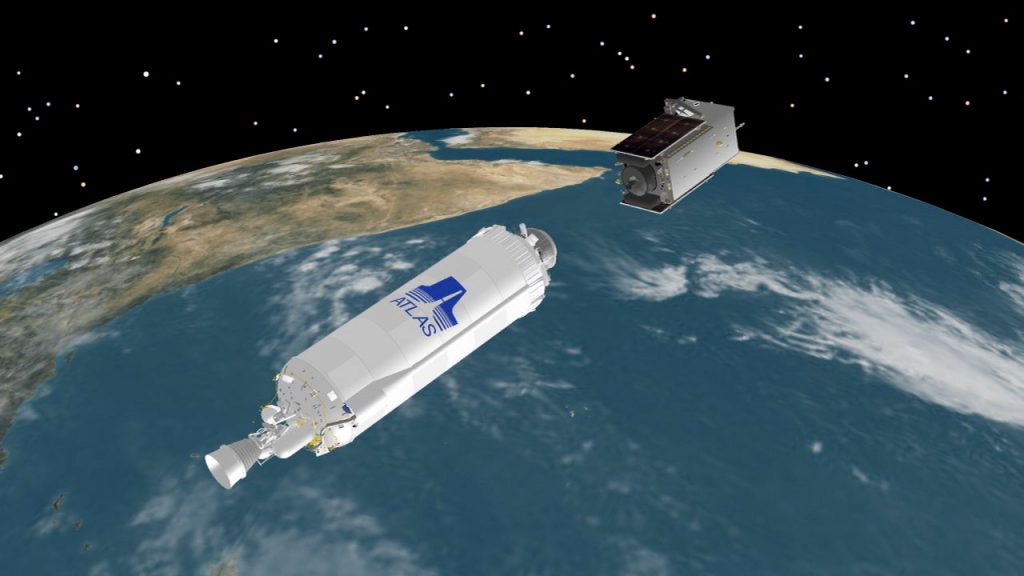
The SBIRS GEO Flight 4 missile warning sentinel is released into orbit from the Centaur upper stage to complete the launch.
See earlier SBIRS GEO Flight 4 coverage.

